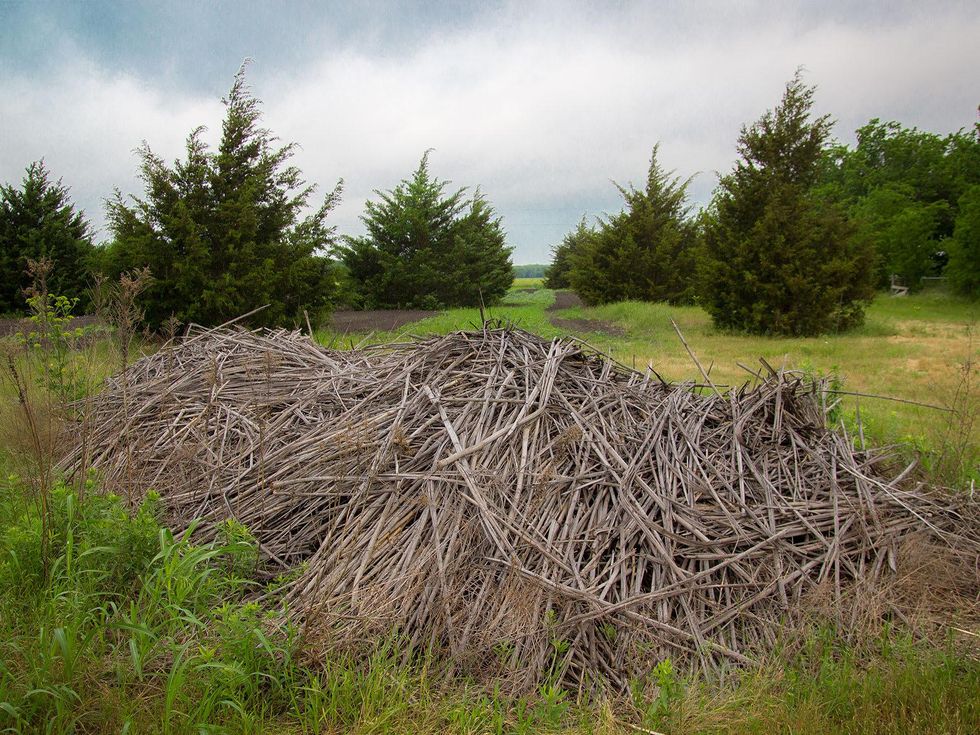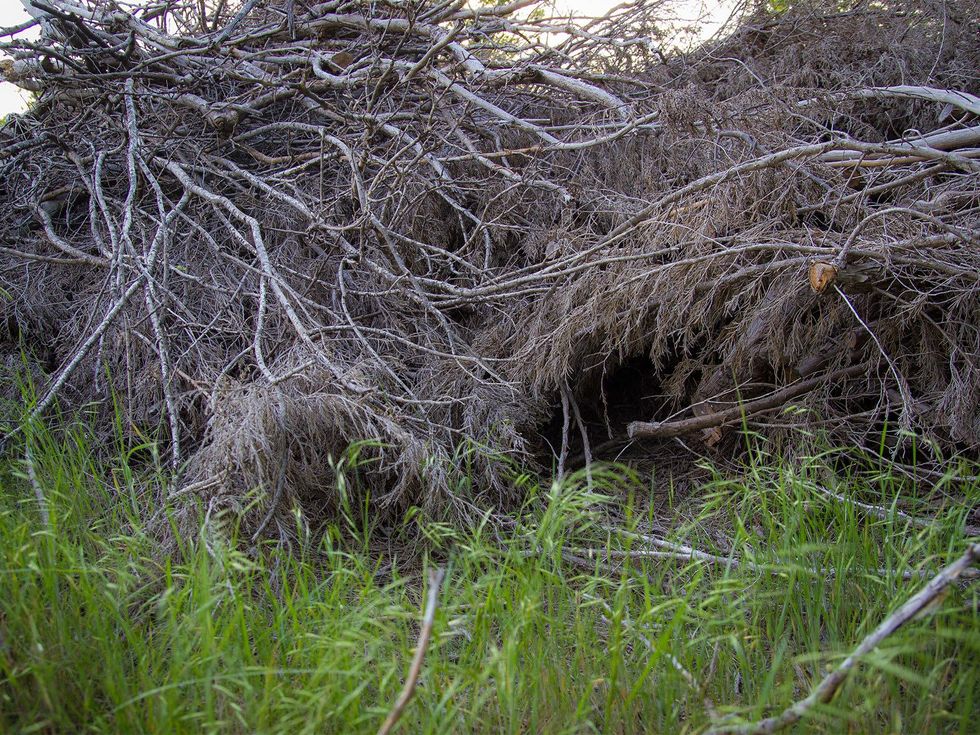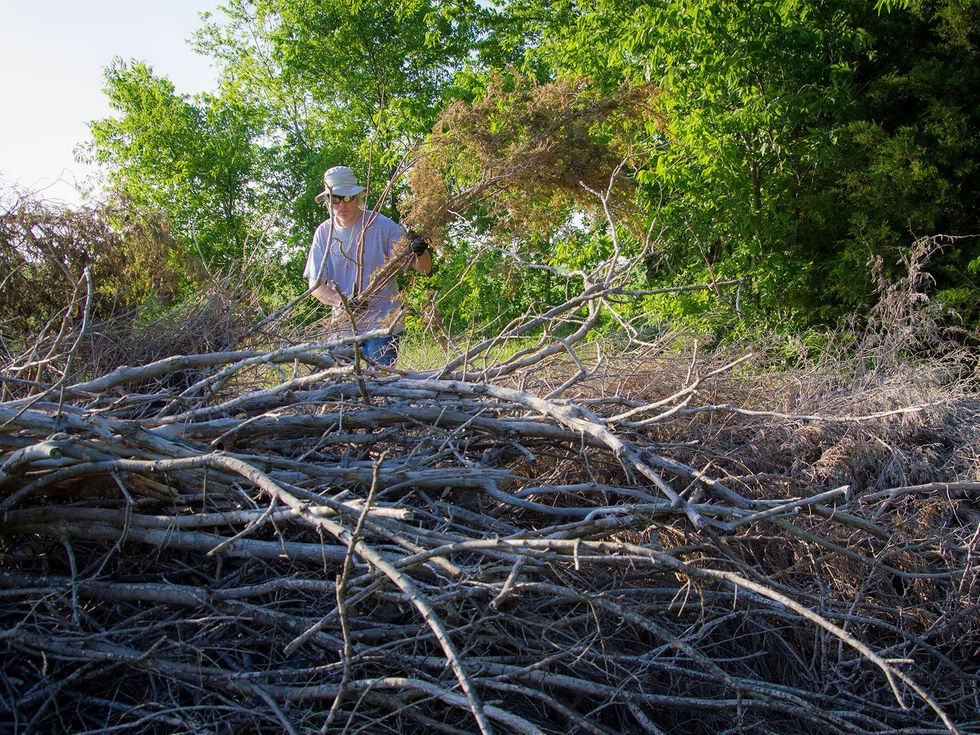The Farmer Diaries
Texas farmer improves amenities for wildlife friends with natural housing
My appreciation for wildlife deepened after I witnessed how my crops thrived last year because of the meticulous pest control services provided by a family of skunks. A few hours before sunset, they showed up for work, requiring nothing but for me to leave them alone.
Every night they ate my squash bugs, and every day I picked fresh squash and zucchini. It was a mutually beneficial arrangement that gave me the biggest harvest ever, nonstop until the first frost in November.
But winter has taken its toll on my wild neighbors; only one remains now. The rest either moved on, died in the cold or were taken by predators. However, I haven't sat by idly, merely hoping for a new family to move in. Rather, I've improved the "amenities" by building a few brush piles, the equivalent of an upscale gated community for wildlife, as an incentive for skunks who might like to relocate.
I've built a few brush piles, the equivalent of an upscale gated community for wildlife, as an incentive for skunks who might like to relocate.
A brush pile is simply a pile of tree branches, logs, rocks and any other natural material that is slow to degrade. Whether small as a dog house or big as a truck, brush piles provide wildlife a place to call home. In the summer, brush piles are a place to wait out long, hot days. When winter temperatures plunge, brush piles are a life-saving refuge.
Brush piles can also boost insect populations. They keep the ground moist and offer plenty of nooks for laying eggs, which in turn adds to the grub that wildlife can eat. Birds nest in or near them, safe from house cats. Rabbits run lightning fast into them whenever a coyote shows up. Possums, skunks, raccoons, toads, lizards and other small creatures will take up residence in them and raise multiple generations. Coyotes, bobcats, hawks and owls also benefit indirectly by the way they stabilize field mice populations near the pile and ensure a steady source of prey.
In natural habitats, small brush piles form on their own when dead limbs fall off trees in a wooded area. After a storm, rushing water carries debris along a creek or a river and deposits it wherever the stream slows down or hits a sharp turn, thus making larger brush piles.
In urban settings, we clear off such debris as if it's garbage. Even in rural areas, most landowners burn brush piles to keep land tidy. Because of this, wildlife faces a housing shortage almost everywhere we humans settle. Mitigating this trend of habitat loss is as simple as building a few brush pile replacements that our native fauna can move into.
Making a pile
My father and I have built two brush piles in the last three years. One was made out of canes after I decided to eliminate an overgrowth of invasive giant reed that I had ignorantly transplanted from a nearby property, thinking that I was establishing a native plant species on our land.
Giant reed was initially brought from Asia into the country two centuries ago to landscape luxury homes on the West Coast. Since then, it has spread across the country, becoming so ubiquitous along ditches and creek beds that I feel I can be forgiven for mistaking it as a native. Several years after planting just two rhizomes of the cane near our melon field, to my regret, it grew into a 50-foot long monolithic barrier almost as impenetrable as a concrete fence.
In the summer, brush piles are a place to wait out long, hot days. When winter temperatures plunge, brush piles are a life-saving refuge.
The pile's ability to protect its residents is obvious from watching my five cats sitting by it for hours, intently staring at it and waiting for some great reward for their patience. No matter how much they want to, they can't get inside to see what lives in it.
There's also a great horned owl who frequently scans the area for a meal. I've spotted him in the beam of my flashlight several times near the pile as he flies overhead apparently waiting for an occasional mouse to scurry out. His hooting at night gives me a feeling of satisfaction, knowing that I've contributed to his well-being.
I formed a second pile last fall out of cedar trees trimmings. At last count, there were more than 200 cedar trees on the land we farm, and most we leave in place. But occasionally one dies and must be felled, or a tree near a building must be trimmed. Whenever we shape up a tree or cut down a dead one, we stack the limbs into a pile. We set the biggest logs down first to create channels and rooms for wild inhabitants. Then we place the smaller limbs and branches on top until we have a pile about the size of a Volkswagen Beetle.
The cane pile sits in the middle of an open field. The cedar brush pile is about 15 feet away from a line of trees, creating a buffer between a wooded area and the prairie that stretches out from it. I have read that the cedar pile's site is preferred by wild birds as it gives them a place to fly out from the trees and land on a perch to survey the area before committing to a vulnerable position in the grass where they'll feed. If a predator does surprise them, they can flee to the pile in a second, foiling any sinister plans of capture.
The Humane Society recommends building three piles per acre, which means that I have some work ahead if I want to ensure that my wild workforce has adequate housing available. There's plenty of tree trimming that I need to do, so I should have plenty of materials. If I'm lucky, I'll attract droves of skunks who will eradicate the grub worms, squash bugs and grasshoppers from my crops, just as their relatives did last year.





 Shaq O'Neal (right) drops into Soul Shack.Soul Shack
Shaq O'Neal (right) drops into Soul Shack.Soul Shack